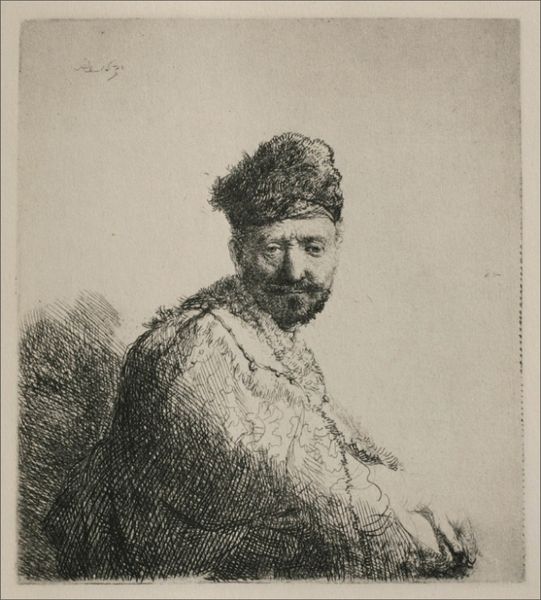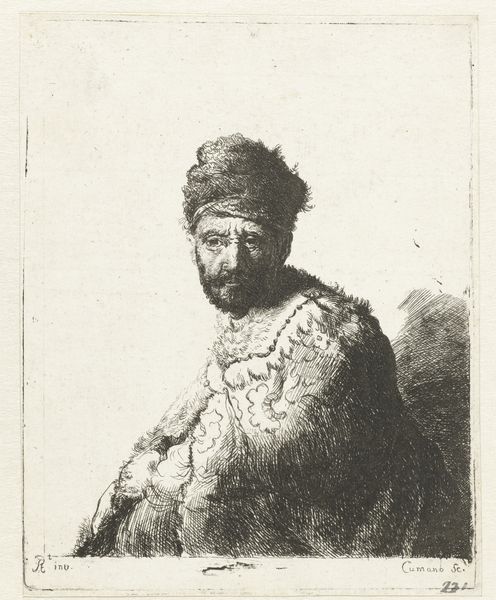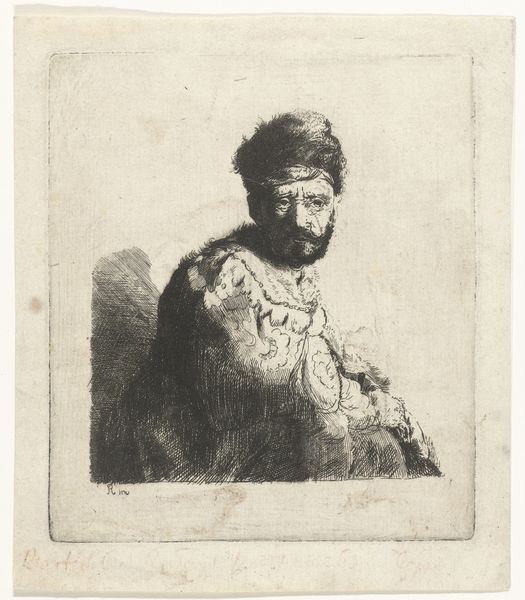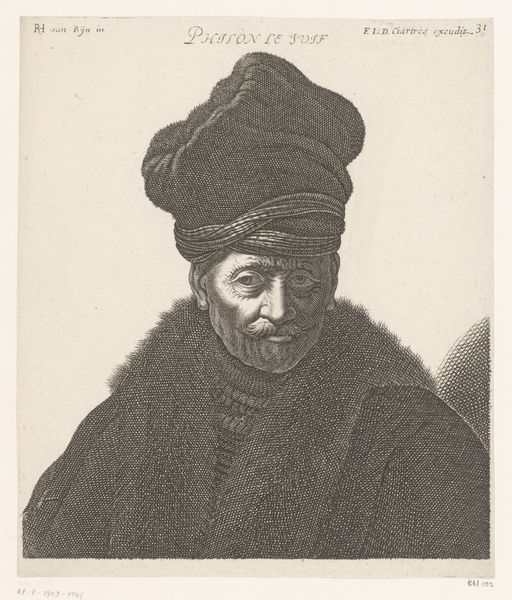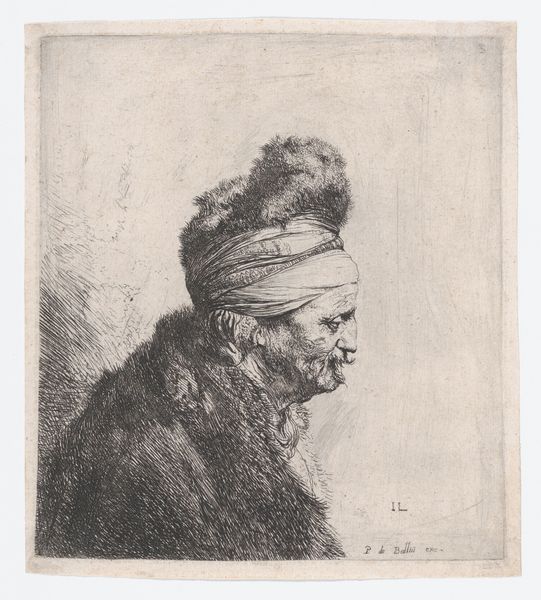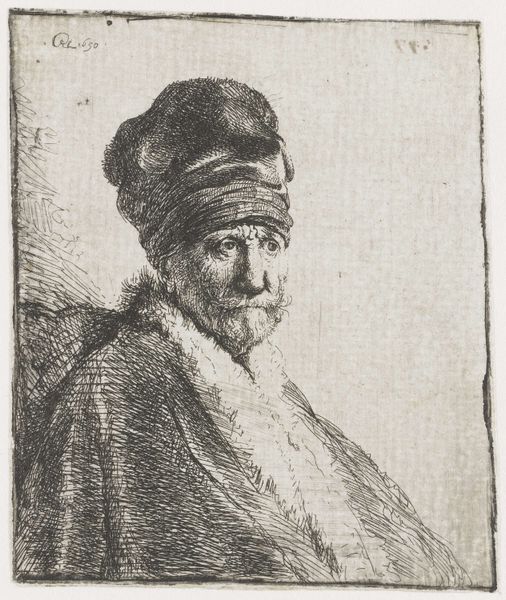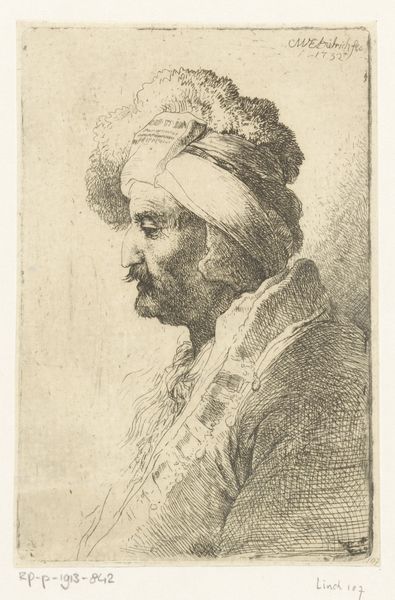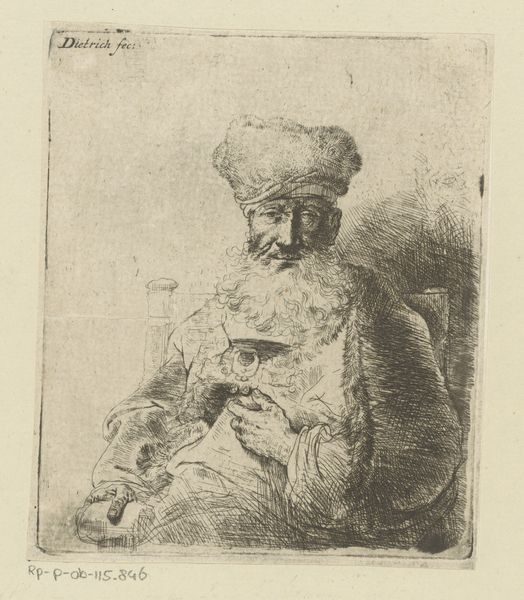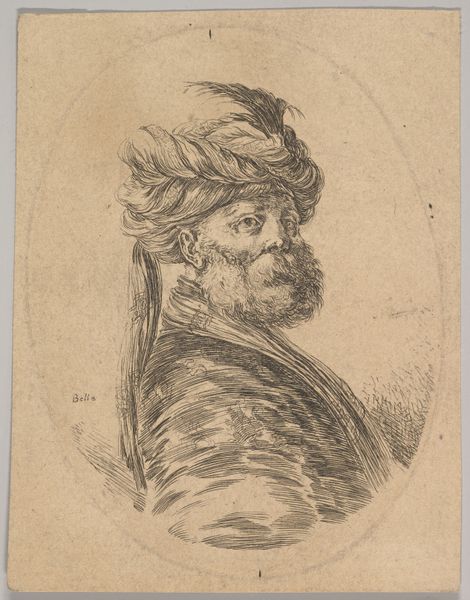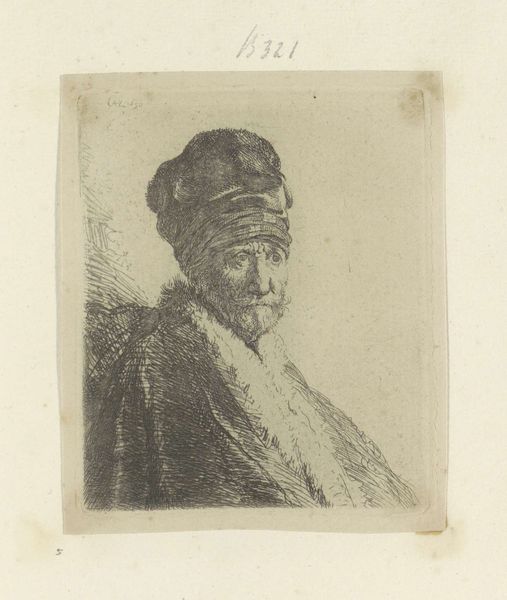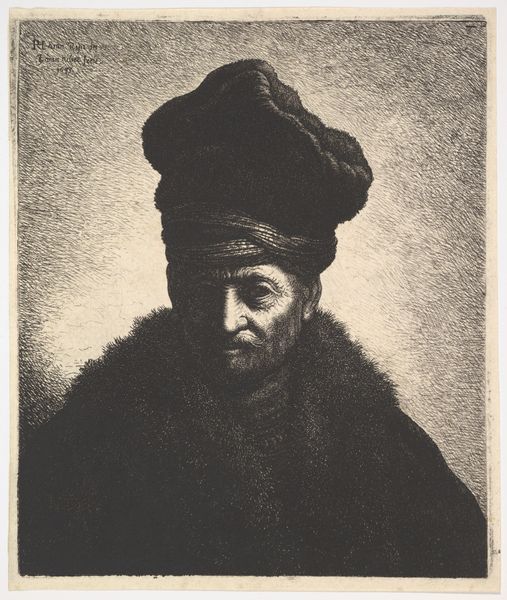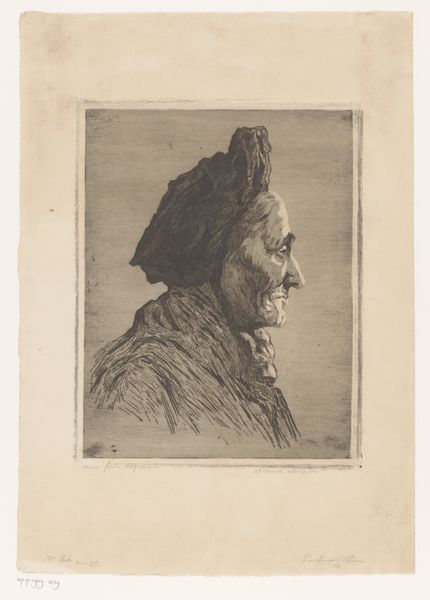
drawing, print, etching, paper, ink
#
portrait
#
drawing
#
baroque
#
dutch-golden-age
# print
#
etching
#
figuration
#
paper
#
ink
#
history-painting
Dimensions: 145 × 129 mm (plate); 155 × 138 mm (sheet)
Copyright: Public Domain
Editor: We're looking at Rembrandt van Rijn's "Bearded Man, in Furred Oriental Cap and Robe," made in 1631 using etching. It's quite a striking image, intense even. All the hatching and the weight of the robe almost feel…theatrical. How do you interpret this work? Curator: Well, the first thing that stands out is exactly that theatricality, which speaks volumes about the social function of art during the Dutch Golden Age. This wasn't just a portrait; it was a performance of identity. Notice how the "oriental" cap and robe are not accurate representations, but rather signifiers of wealth, status, and engagement with global trade. Rembrandt is placing this man within a specific social narrative. Editor: So it's less about the man himself, and more about what he represents? Curator: Precisely. Think about who had the means to commission such a piece. The rising merchant class. Rembrandt is acutely aware of his patrons and crafting imagery to suit their aspirational self-image. This piece exists in a landscape that facilitated these portrayals of power through a type of costuming. Do you see how his gaze meets ours directly, a conscious play on visibility? Editor: He does seem very self-aware. Was this common? Curator: To an extent. The art market was booming, and artists like Rembrandt were adept at manipulating these visual codes to create demand. He presents not just a portrait but an artifact that actively participates in reinforcing social hierarchies. Editor: I see! I initially saw the theatricality as drama, but it's a consciously constructed persona reflecting social dynamics. That changes my perspective completely. Thanks! Curator: And seeing your fresh perspective helps me appreciate how Rembrandt continues to actively participate in the drama of the museum as an institution today.
Comments
No comments
Be the first to comment and join the conversation on the ultimate creative platform.

